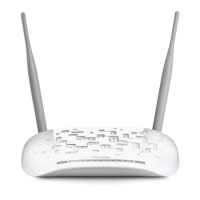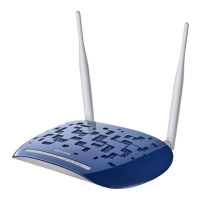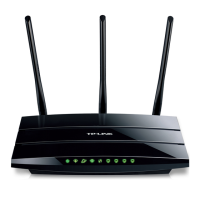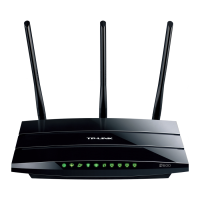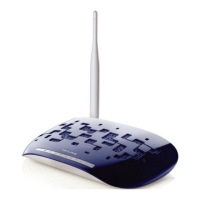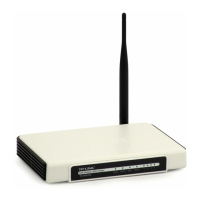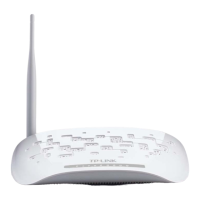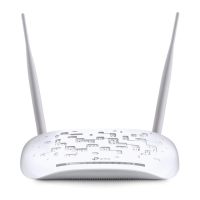TD-W8961ND 300Mbps Wireless N ADSL2+ Modem Router User Guide
44
¾ Local Start & End IP: Enter the local IP Address you plan to map to. Local Start IP is the
starting local IP address and Local End IP is the ending local IP address. If the rule is for all
local IPs, then the Start IP is 0.0.0.0 and the End IP is 255.255.255.255.
¾ Public Start & End IP: Enter the public IP Address you want to do NAT. Public Start IP is the
starting public IP address and Public End IP is the ending public IP address. If you have a
dynamic IP, enter 0.0.0.0 as the Public Start IP.
¾ Address Mapping List: This displays the information about the Mapping addresses.
To add a mapping rule:
Step 1: Select the “Virtual Circuit” and Multiple for the “Number of IPs”. Then select the tab IP
Address Mapping (shown in Figure 4-28).
)
Note:
IP Address Mapping is only available for VCs with Multiple IPs.
Step 2: Select the Rule index for the rule as shown in Figure 4-31.
Step 3: Select the rule type you want from the drop-down list.
Step 4: Enter the local and public IP addresses in the corresponding fields.
Step 5: After that, click SAVE to make the entry take effect.
Other operations for the entries as shown in Figure 4-31:
Select the index of assigned entry, and click the DELETE button to delete the entry.
Click the BACK button to return to the previous screen.
Click the CANCEL button to cancel the configuration which is made just now.
4.4.4 QoS
Choose “Advanced Setup→QoS”, you can configure the QoS in the next screen. QoS helps to
prioritize data as it enters your router. By attaching special identification marks or headers to
incoming packets, QoS determines which queue the packets enter, based priority. This is useful
when there are certain types of data you want to give higher priority, such as voice data packets
give higher priority than Web data packets. This option will provide better service of selected
network traffic over various technologies.
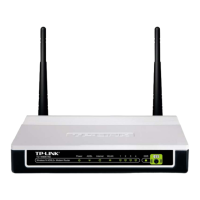
